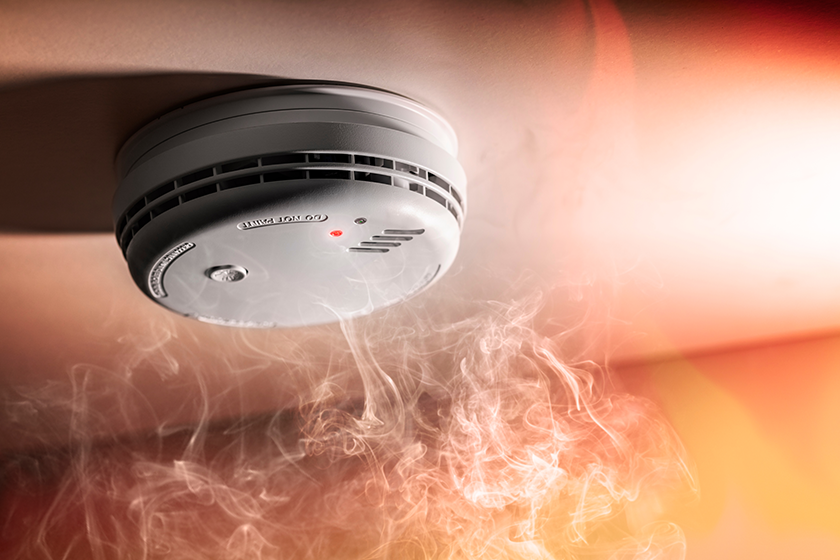Do Carbon Monoxide Detectors Detect Gas Leaks?

A common question many homeowners ask is, will carbon monoxide detector detect gas leak? It is important to understand that these two threats—carbon monoxide and natural gas—are different in nature, and so are the detectors made to sense them.
Knowing the difference between these two gases and the tools used to detect them can save lives. Although they may seem similar, carbon monoxide (CO) and natural gas are chemically distinct, each with its own risks and safety precautions.
Understanding Carbon Monoxide and Natural Gas
Carbon monoxide is a colorless, odorless gas produced when fuels like wood, gasoline, or natural gas do not burn completely. This gas is dangerous because it prevents the blood from carrying oxygen to cells and tissues, which can lead to poisoning.
Natural gas, primarily composed of methane, is also colorless and odorless but is not toxic in small amounts. The problem with natural gas is that it is highly flammable and can cause explosions if it leaks and accumulates in an enclosed space.
While both gases are hazardous, they require different approaches in terms of detection. This is where confusion often arises. People sometimes believe that one type of detector can serve both functions.
The Role of Carbon Monoxide Detectors
Carbon monoxide detectors are designed specifically to alert you when CO levels rise in your home. These detectors work by sensing the concentration of carbon monoxide in the air.
Once the concentration reaches a certain level, the detector sounds an alarm. This warns you that you may be in danger.
However, carbon monoxide detectors are not built to detect other gases. Their sensors react only to CO molecules. This means they cannot detect natural gas leaks. This is an important distinction because many people assume their CO detector will catch a gas leak when, in reality, it cannot.
How Carbon Monoxide Detectors Work
CO detectors are equipped with sensors that measure the presence of carbon monoxide in the air. There are typically three types of sensors used in these detectors:
- Electrochemical Sensors: These sensors react with carbon monoxide molecules and generate a current. The higher the concentration of CO, the greater the current, which triggers the alarm.
- Metal Oxide Semiconductor (MOS) Sensors: These detect carbon monoxide by changing the resistance of the semiconductor when CO is present.
- Biomimetic Sensors: These sensors mimic the human body’s response to carbon monoxide exposure, changing color in the presence of CO.
Regardless of the type, these sensors are all designed to respond only to carbon monoxide and will not react to natural gas.
Will a Carbon Monoxide Detector Detect a Gas Leak?
As mentioned earlier, will a carbon monoxide detector detect a gas leak? The short answer is no. Carbon monoxide detectors are specifically calibrated to detect CO gas. They do not react to methane, the main component of natural gas. This is due to the different chemical properties of these gases.
Methane from a natural gas leak behaves differently from carbon monoxide. This is why the two gases require different detection technologies.
While natural gas leaks can pose serious risks, CO detectors will not provide any alerts for these types of hazards. If natural gas leaks are not addressed promptly, they can lead to explosions, fires, or asphyxiation. For this reason, it is important to use the right type of detector to address each specific threat.
The Importance of Natural Gas Detectors
While carbon monoxide detectors are important, a natural gas detector serves a different purpose. These detectors are specifically designed to detect methane, the primary component of natural gas.
Natural gas detectors typically use a semiconductor sensor to measure the presence of methane in the air. When the concentration reaches a certain level, the detector will emit a warning.
Installing both carbon monoxide and natural gas detectors in your home is recommended for comprehensive safety. Since CO detectors cannot detect natural gas, relying on both types of detectors can make sure that your home is adequately protected from both gas leaks and CO poisoning.
Natural Gas Detection Technologies
Natural gas detectors are equipped with sensors designed to identify methane in the air. There are a few different technologies used in these detectors, including:
- Semiconductor Sensors: These sensors detect natural gas by measuring changes in electrical conductivity when methane molecules are present in the air.
- Infrared Sensors: These sensors use infrared light to detect the concentration of gases like methane. When methane absorbs infrared light, the sensor detects this change and triggers an alarm.
- Catalytic Sensors: These sensors use a heated element that reacts with gases, like methane, to detect their presence. A change in the element’s temperature can trigger an alarm.
Signs of a Natural Gas Leak
In addition to installing a natural gas detector, it is important to be aware of the signs of a gas leak. Gas leaks are not always immediately noticeable. However, there are several signs that may indicate a leak:
- Smell of Rotten Eggs: Natural gas is odorless, but gas companies add a sulfur-like compound to it to give it a distinctive odor. If you smell rotten eggs, evacuate the area immediately.
- Hissing Sounds: A gas leak may produce a hissing sound as the gas escapes from pipes or appliances.
- Bubbles in Water: If you notice bubbles forming in standing water, it may indicate that gas is leaking into the area.
- Dead or Dying Plants: Gas leaks can sometimes cause plants near the leak to die or become discolored.
Carbon Monoxide and Natural Gas in the Same Space
While carbon monoxide detectors cannot detect natural gas, a gas leak can still lead to CO exposure in some circumstances. For example, if a natural gas appliance malfunctions or leaks and causes incomplete combustion, it may release carbon monoxide into your home. In such cases, a carbon monoxide detector may alert you to CO. However, it will not detect the natural gas itself.
This is why both detectors—carbon monoxide and natural gas—are necessary for full protection. If your home is equipped with gas appliances or you live where natural gas is used, you need both types of detectors.
Fire Safety Alarms specializes in installing and maintaining carbon monoxide and natural gas detectors. We understand the importance of safeguarding your home from all potential threats. Our team can help you choose the right detectors for your specific needs and assure they are correctly installed.
Our services also include regular inspections to keep your detectors working properly. You can trust us to provide expert guidance on both educational fire protection and emergency management services to keep your property safe.
